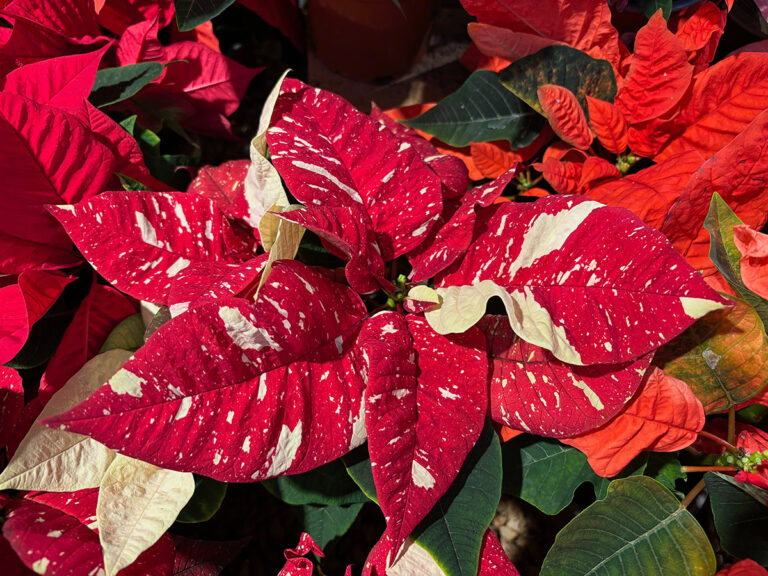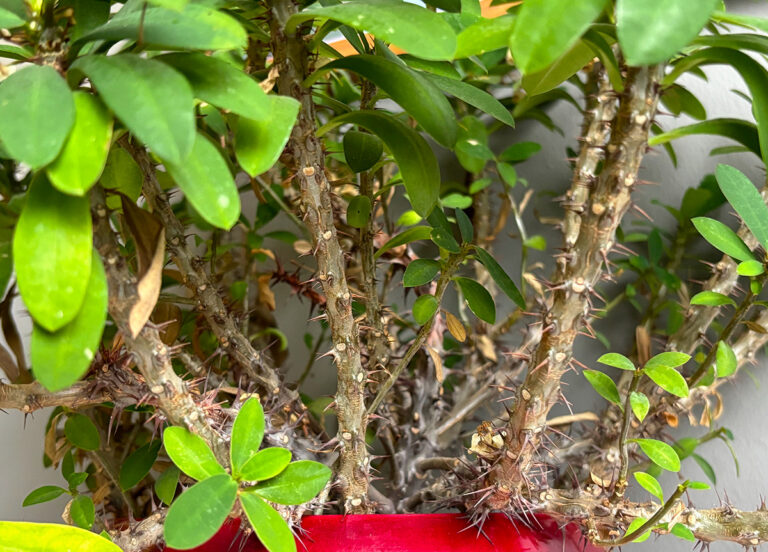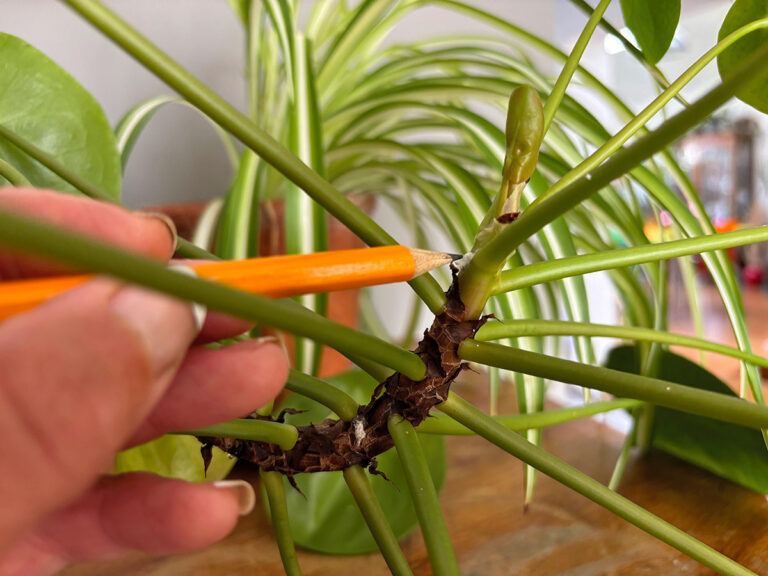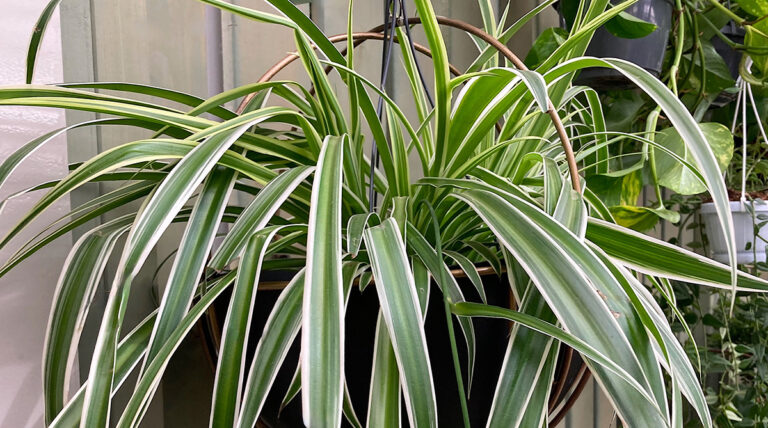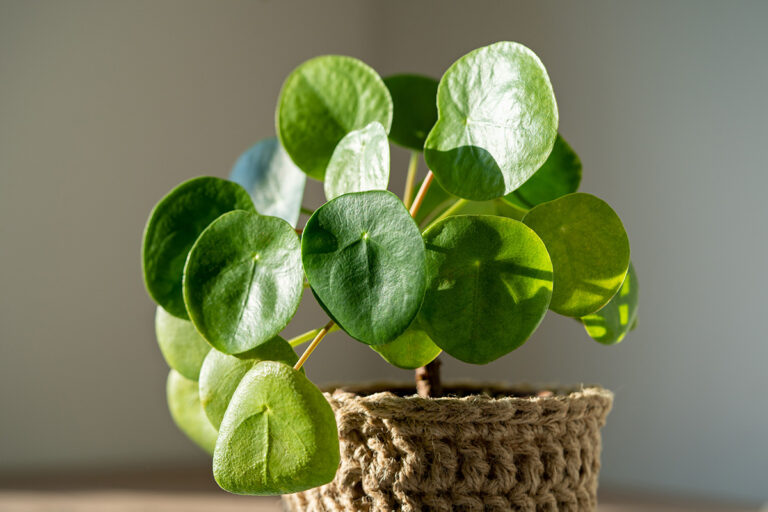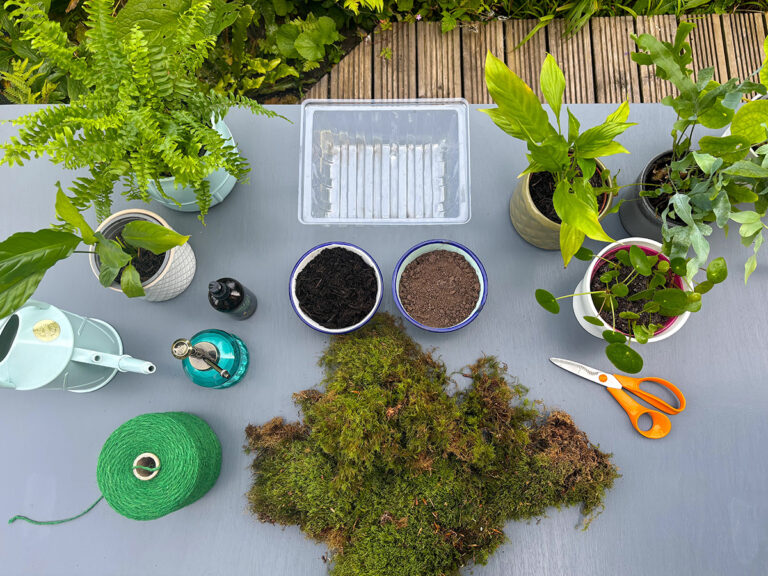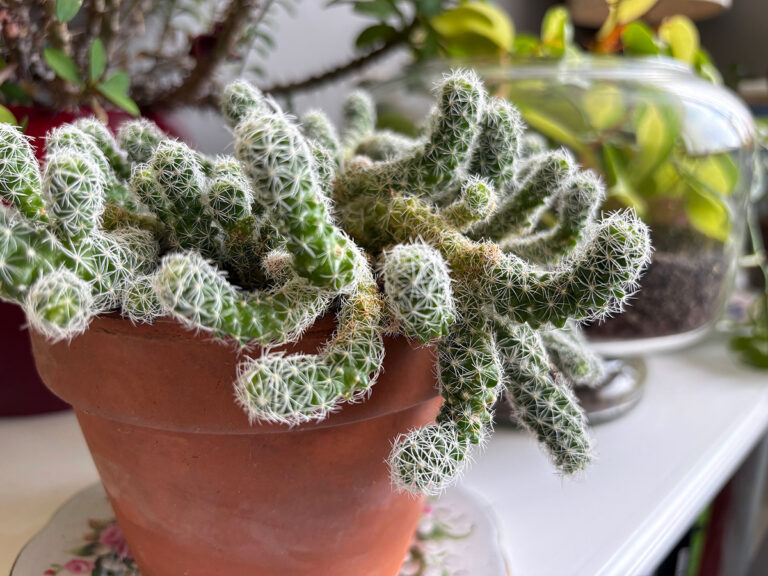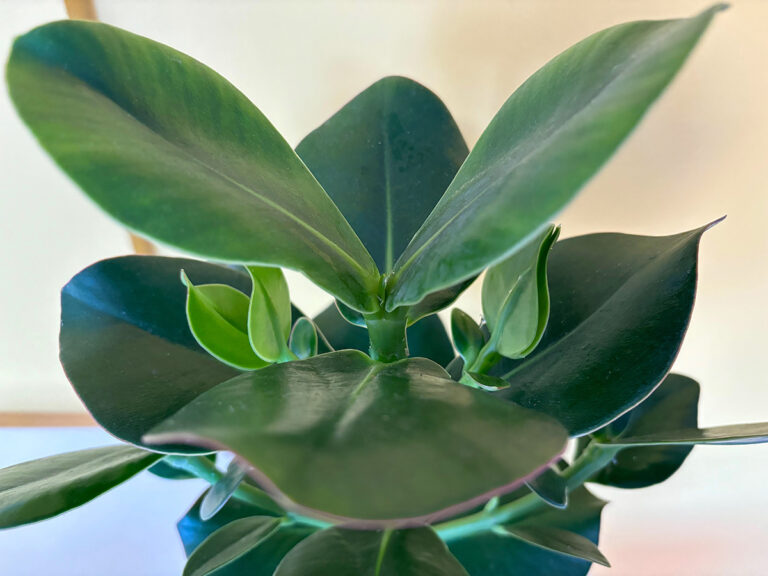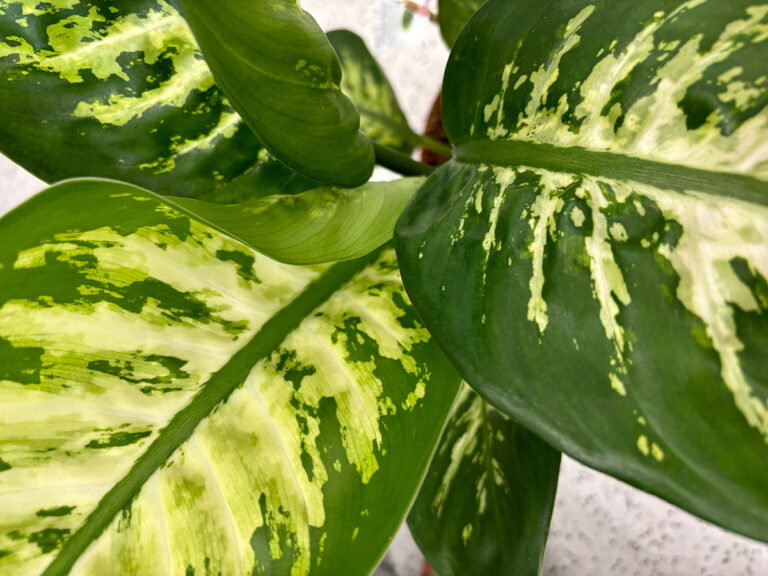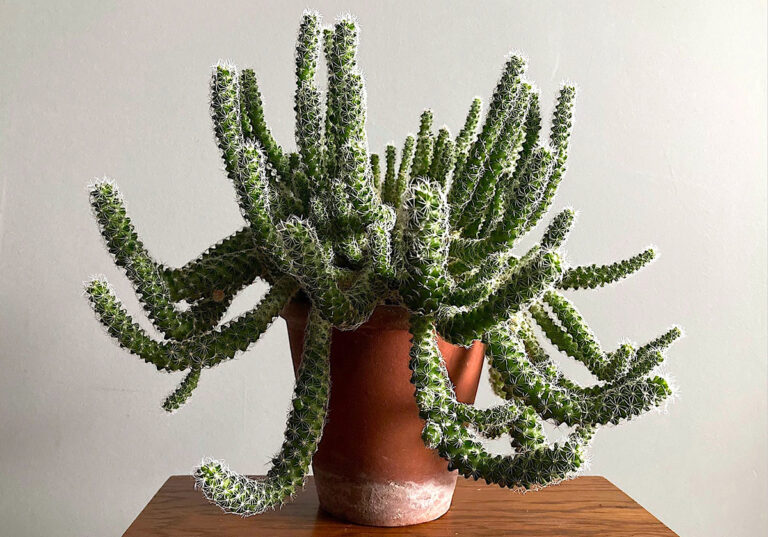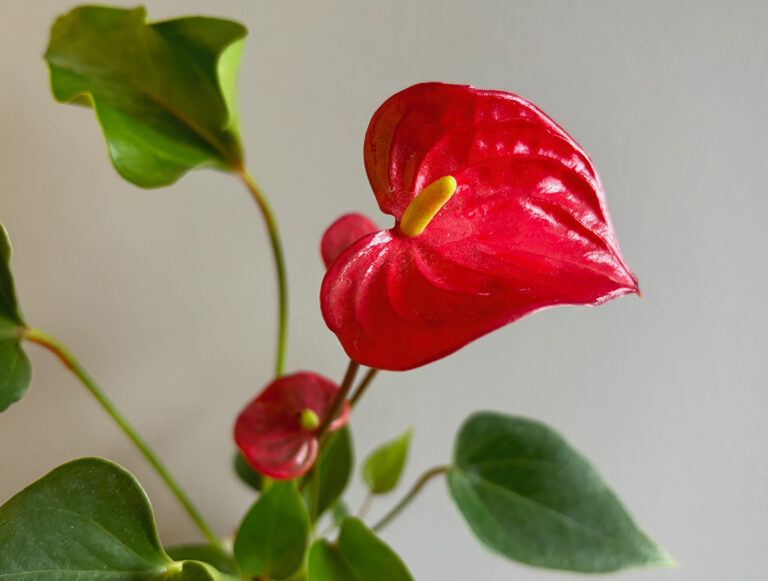Many of our most coveted houseplants actually are native to tropical climes and naturally reside in rainforests where they compete for resources spreading their foliage along the forest floor below the dense understory. This fight for survival has evolved over time with adaptations to cope with low light levels and although many houseplants will thrive in bright light, many can live happily in dimly illuminated rooms. Discover which shade tolerant houseplants could suit your home.
Staghorn Fern, Platycerium bifurcatum
If you are looking for a weird and wonderful houseplant to mount on a wall then look no further than the Staghorn Fern, Platycerium bifurcatum, also known as Elkhorn fern. This evergreen fern has large forked fronds like antlers that naturally compete for light in forest canopies so situate near an east or west-facing window for a perfect mix of bright, diffused light. If a south-facing window is the only option then be cautious to not scorch leaves; filter light with blinds.
Native to Polynesian rainforests it grows as an epiphytic fern, rooting itself in tree crevices. In our homes this incredible architectural plant is suited to humid environments like a bathroom or kitchen; to water dunk its rootball in rainwater. This unusual fern is slow growing and can live up to 20 years!

Lucky Bamboo, Dracaena sanderiana
Lucky Bamboo is a low maintenance houseplant which is not actually a bamboo but in fact part of the Dracaena family. Also known as the Friendship bamboo it holds great esteem in the Chinese art of Feng shui and is a popular gift for Chinese New Year believed to bring good fortune.
This plant originates from the shady tropical rainforests of Southeast Asia and Africa and the stems we see for sale are most likely from China or Taiwan where stalks are trained into their characteristic twists.
Lucky Bamboo is a perfect plant for beginners; simply pop stems in a glass of rainwater or compost and it pretty much looks after itself, just regularly change the water and mist. Place near an east-facing window where diffused, indirect light will keep these stems shooting.

Umbrella Plant, Schefflera
Schefflera arboricola and Schefflera actinophylla (see main image) are fast-growing statement houseplants that can reach heights of between 1.5-2.5m; requiring little attention they are an ideal evergreen houseplant for busy people who maybe a bit forgetful with watering.
Each stem hosts five glossy oval leaves which fan out in an arching canopy giving the plant its common name of umbrella plant.
Pop your hardy houseplant in dappled indirect sunlight to mimic its native Australian and Southeast Asian rainforest origins and keep away from direct rays which could scorch leaves in summer.
ZZ Plant, Zamioculcas zamiifolia
The ZZ Plant or Zanzibar Gem is almost indestructible; it loves low light and is drought tolerant so can thrive on neglect, making it an ideal plant for shady north-facing rooms where plant choices would otherwise be slim.
Native to East Africa the evergreen ZZ Plant is part of the aroid family and grows in dry grasslands and forests. Its dark glossy leaves appear almost plastic. Leaves contain high levels of water and can live for over six months which accounts for the plant’s ability to survive long periods without being watered.
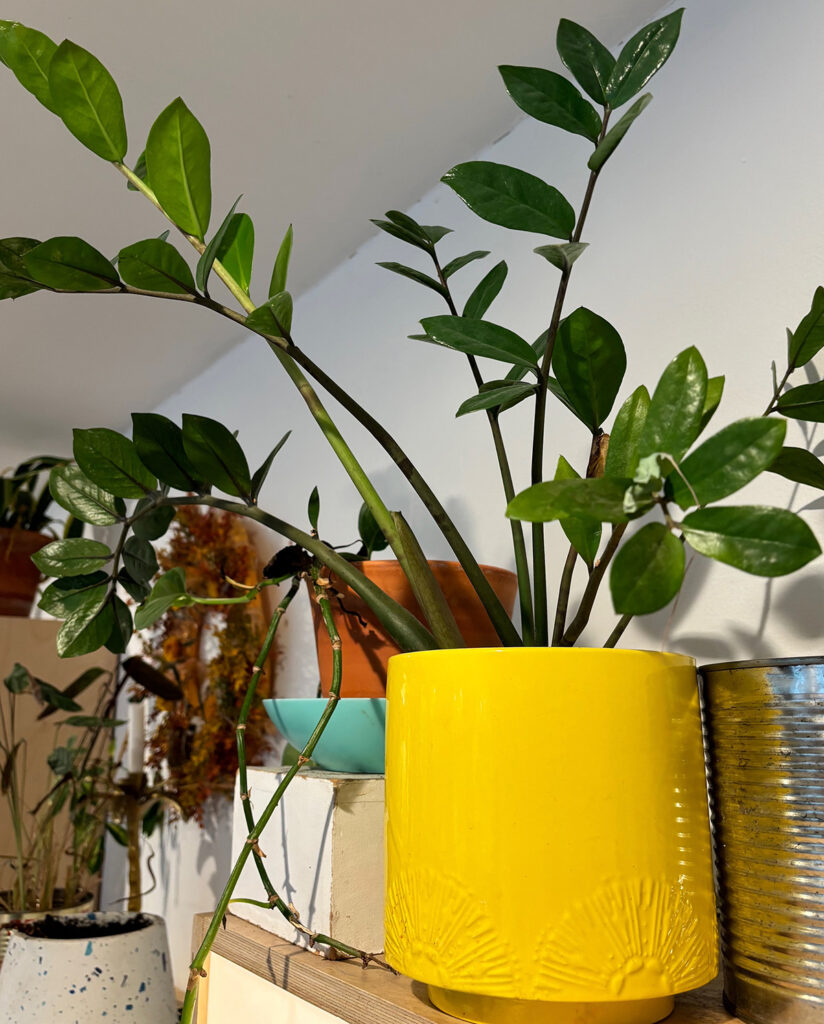
Prayer Plant, Maranta leuconura
There are around 40-50 species of Maranta; their exotic patterned leaves look painted rather than a natural occurrence making Maranta difficult to ignore.
Maranta leuconura is an evergreen perennial which likes to sprawl. In its natural habitat it spreads along the humid forest floors of Brazil so give them space in your home to trail from shelves or grow along tables.
This plant has a fascinating ritual of vertically closing foliage at night and opening leaves horizontally in the morning; a process known as nyctinasty. This reaction is triggered by darkness. Liquid moves in and out of the pulvinus, cells at the base of leaves, causing the phenomena of rising and falling, almost like the plant praying before sleep.
Direct sunlight can scorch foliage so find a room with indirect light combined with consistent warmth and humidity and they will thrive; don’t be afraid to move pots to a more suitable spot if they don’t favour your first choice. Plants need light for photosynthesis to convert water and carbon dioxide into glucose energy so if any of your houseplants appear to be suffering from light levels being too low then move them.



